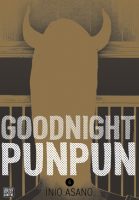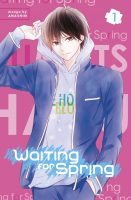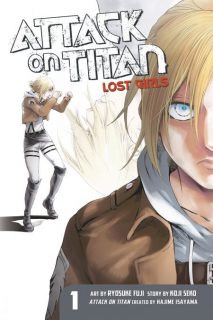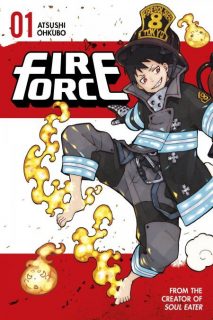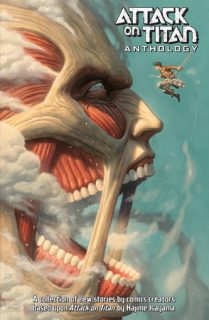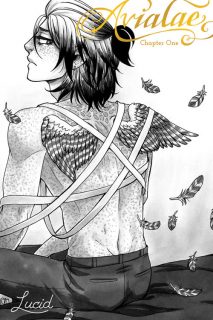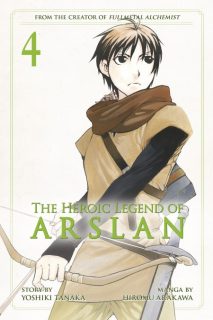My News and Reviews
The Bookshelf Overload for October was posted at Experiments in Manga last week, giving a quick summary of some of the interesting manga, anime, and other media that made their way into my home last month. Otherwise, it was a fairly quiet week at the blog, and it’s going to be even quieter this week. I’m currently work on my next in-depth review, but I suspect that it won’t be ready to reveal to the world until sometime next week. (Hopefully it will be worth the wait.) As for other interesting things recently found online: Brigid Alverson wrote up a recap of an interview with Fairy Tail creator Hiro Mashima from this year’s New York Comic Con for Barnes & Noble and over at Crunchyroll Evan Minto interviewed Frederik L. Schodt, a manga translator, scholar, and personal friend of Osamu Tezuka.
Quick Takes
 Shirley, Volume 1 by Kaoru Mori. Only the first volume of Shirley was ever released in English. It’s now well out-of-print, but it’s also well-worth picking up. I would love to see Yen Press release the entire series in a handsome omnibus that would be at home next to the new edition of Mori’s Emma. I believe that most if not all of the short manga in the first volume of Shirley precede Emma, but the collection was only published after the first volume of Emma was released. The artwork is simpler than that found in Mori’s most recent series in translation, A Bride’s Story, but it is still quite lovely and evocative. As a whole, Shirley is a charming work. Mori’s love of maids is quite evident. The first volume collects five episodic chapters which follow Bennett Cranley and the titular Shirley Madison, a young maid that Bennett hires, in addition to two other stories unrelated by plot although they both also feature Edwardian-era maids. Shirley is only thirteen when she starts working for Bennett and they develop a close, if somewhat unusual, relationship as a result. While Shirley is a very capable maid she is still young–at times its as though she’s more like Bennett’s ward rather than her employee. She’s a sweet, likeable girl, so it’s easy to see why Bennett would be so taken with her.
Shirley, Volume 1 by Kaoru Mori. Only the first volume of Shirley was ever released in English. It’s now well out-of-print, but it’s also well-worth picking up. I would love to see Yen Press release the entire series in a handsome omnibus that would be at home next to the new edition of Mori’s Emma. I believe that most if not all of the short manga in the first volume of Shirley precede Emma, but the collection was only published after the first volume of Emma was released. The artwork is simpler than that found in Mori’s most recent series in translation, A Bride’s Story, but it is still quite lovely and evocative. As a whole, Shirley is a charming work. Mori’s love of maids is quite evident. The first volume collects five episodic chapters which follow Bennett Cranley and the titular Shirley Madison, a young maid that Bennett hires, in addition to two other stories unrelated by plot although they both also feature Edwardian-era maids. Shirley is only thirteen when she starts working for Bennett and they develop a close, if somewhat unusual, relationship as a result. While Shirley is a very capable maid she is still young–at times its as though she’s more like Bennett’s ward rather than her employee. She’s a sweet, likeable girl, so it’s easy to see why Bennett would be so taken with her.
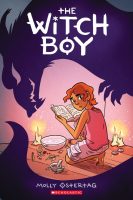 The Witch Boy by Molly Knox Ostertag. I first learned about The Witch Boy while at the Toronto Comic Arts Festival earlier this year. Ostertag was on the panel “LGBTQ Comics Abroad” along with several other creators when she mentioned the upcoming publication of the graphic novel; I immediately added it to my list of comics to pick up when it was released. Ostertag is probably best known as the artist of the ongoing webcomic Strong Female Protagonist and has collaborated as an illustrator on several other comics projects as well. However, The Witch Boy is her debut work as both author and artist. The graphic novel is aimed at middle grade readers, but the comic will be able to be appreciated by adult audiences as well. Aster comes from a family of magic users–the women are taught the secrets of witchery while the men are expected to learn how to shapeshift, a tradition which is strictly adhered to. Much to his family’s dismay, Aster would much rather study with the girls than roughhouse with the boys. Forbidden from learning the women’s magic despite his talent for it, Aster longs for his family to accept his true self. The Witch Boy is a beautiful story with a wonderful message; I hope to read more of Ostertag’s writing in the future.
The Witch Boy by Molly Knox Ostertag. I first learned about The Witch Boy while at the Toronto Comic Arts Festival earlier this year. Ostertag was on the panel “LGBTQ Comics Abroad” along with several other creators when she mentioned the upcoming publication of the graphic novel; I immediately added it to my list of comics to pick up when it was released. Ostertag is probably best known as the artist of the ongoing webcomic Strong Female Protagonist and has collaborated as an illustrator on several other comics projects as well. However, The Witch Boy is her debut work as both author and artist. The graphic novel is aimed at middle grade readers, but the comic will be able to be appreciated by adult audiences as well. Aster comes from a family of magic users–the women are taught the secrets of witchery while the men are expected to learn how to shapeshift, a tradition which is strictly adhered to. Much to his family’s dismay, Aster would much rather study with the girls than roughhouse with the boys. Forbidden from learning the women’s magic despite his talent for it, Aster longs for his family to accept his true self. The Witch Boy is a beautiful story with a wonderful message; I hope to read more of Ostertag’s writing in the future.
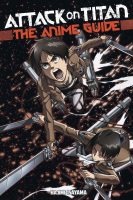 Attack on Titan: The Anime Guide by Ryosuke Sakuma and Munehiko Inagaki. Kodansha Comics almost exclusively publishes manga, although over time a few other things have been released as well, most of which are in some way a part of the massively successful Attack on Titan franchise. One of the more recent non-manga offerings is Attack on Titan: The Anime Guide, a full-color volume consisting of artwork, character designs, process overviews, and other background information relating to the first season of the Attack on Titan anime. The Anime Guide will mostly appeal to readers who are already devoted fans of Attack on Titan. What interested me most were the numerous interviews included in the book. The most notable is the lengthy interview with and conversation between Hajime Isayama and Tetsuro Araki, the original creator of Attack on Titan and the series director of the anime respectively. (Isayama saw the anime as an opportunity to improve upon or even correct aspects of the manga with which he wasn’t completely satisfied.) The interviews with the anime’s chief animation directors, Titan designer, action animation directors, scriptwriter, voice actors, and theme song musicians were also interesting to read.
Attack on Titan: The Anime Guide by Ryosuke Sakuma and Munehiko Inagaki. Kodansha Comics almost exclusively publishes manga, although over time a few other things have been released as well, most of which are in some way a part of the massively successful Attack on Titan franchise. One of the more recent non-manga offerings is Attack on Titan: The Anime Guide, a full-color volume consisting of artwork, character designs, process overviews, and other background information relating to the first season of the Attack on Titan anime. The Anime Guide will mostly appeal to readers who are already devoted fans of Attack on Titan. What interested me most were the numerous interviews included in the book. The most notable is the lengthy interview with and conversation between Hajime Isayama and Tetsuro Araki, the original creator of Attack on Titan and the series director of the anime respectively. (Isayama saw the anime as an opportunity to improve upon or even correct aspects of the manga with which he wasn’t completely satisfied.) The interviews with the anime’s chief animation directors, Titan designer, action animation directors, scriptwriter, voice actors, and theme song musicians were also interesting to read.

